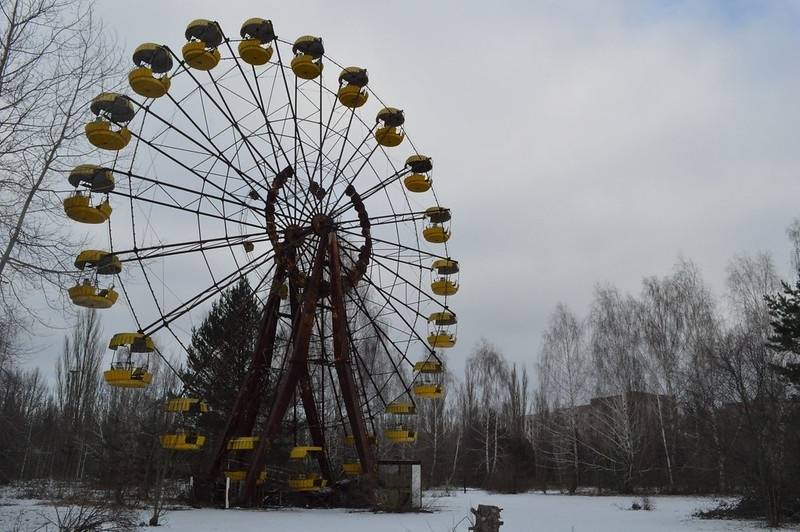
By Cym Gomery, Montreal for a World BEYOND War, September 2, 2022
On August 3rd 2022, FutureWave.org hosted – and World BEYOND War sponsored – a watch party of the documentary ”A Television Event” as part of the August 2022 Ban the Bomb month. Here is the lowdown, in case you missed it.
”A Television Event” describes the people, politics and events surrounding the making of ‘The Day After”, a 1983 made-for-TV film that shows the effects of a nuclear explosion on a small town in Kansas. ”Television Event” introduces us to people from many disparate social groups that had a hand in making ”The Day After”. Front and center are the film-makers, who exist in their own world of make-believe and trademark tantrums; but instead of professional actors, it was the people of Lawrence, Kentucky, where the film was shot, who served as extras in the film itself, and found themselves enacting the terror of their own horrific deaths. The ABC television producers financed this project, and they had a completely different set of concerns. Namely, how to make a TV series that few advertisers wanted to touch. After all, who would want to be associated with a nuclear disaster? (One notable exception was Orville Redenbacher popcorn, perhaps because Redenbacher has after all made his fortune on explosions – albeit very tiny ones). Another interesting aspect was the contrast between the film-making process itself – which could sometimes be quite lighthearted and humorous, as witnessed by the producer and director as they triumphantly recalled selling TV executives on the idea of the film, and negotiating with industry lawyers and bureaucrats about which scenes to keep and which to cut – versus the lawyers and bureaucrats being concerned with pleasing advertisers and audiences while the director and producers were focussed on realizing their vision.
The film features interviews with producers, the director Nick Meyer (himself an enfant terrible), the writer Edward Hume, ABC Motion Picture Division President Brandon Stoddard, actress Ellen Anthony, who played the farm girl, Joleen, various actors and extras, and even the woman charged with orchestrating special effects, like the mushroom cloud of the explosion.
This film will answer questions that you never thought to ask, like:
- Meyer initially hesitated to take on such a grim film; what comment spurred Meyers to finally accept the position of director?
- What was the controversy that played a part in director Nick Meyers leaving the project, and why was he subsequently rehired?
- What common beverage was used to create the illusion of a mushroom cloud?
- What was a Hiroshima survivor’s assessment when she saw the footage of ‘The Day After?’
- How many episodes were originally planned, and how many ultimately aired?
Over 100 million viewers watched this made-for-TV movie when it was first aired on ABC, on November 20 1983 – half the adult population of the United States, which was the largest audience for a made-for-TV movie up to that time. It was subsequently shown in many other countries, including Russia. ”The Day After” had a galvanizing effect on the world – there were demonstrations, and there was political fallout – the good kind. Immediately after the broadcast, Ted Koppel hosted a live panel discussion to help viewers cope with what they’d witnessed. Dr. Carl Sagan, Henry Kissinger, Robert McNamara, William F. Buckley and George Shultz were among those who participated.
Footage shows that then-U.S. president Ronald Reagan was very disturbed by the film, and this is substantiated in his memoirs. Reagan went on to sign the Intermediate Range Weapons Agreement at Reykjavik (in 1986) with Gorbachev. Meyers recounts, ”I got a telegram from his administration that said, ‘Don’t think your movie didn’t have any part of this, because it did.'” “Television Event” does a good job of covering the social implications of this film that created a sense of urgency for the need for nuclear disarmament.
However, reviewer Owen Gleiberman felt that ”Television Event’‘ didn’t go far enough.
“The issue with ‘Television Event,’ though, is what’s not there: a shred of commentary that isn’t pimping for the movie, that might provide a larger cultural context for it or even (God forbid) look a bit askance at what ‘The Day After’ ‘achieved’.”
For me, as an activist, watching this ”movie about a movie” I felt sad that, forty years later, humanity’s memory has faded; our day-to-day lives are filled with news of disasters, we have more nuclear bombs than ever, and our species is (to borrow Helen Caldicott’s phrase) sleepwalking to Armageddon. And yet, I also felt not quite hopeful, but intrigued. As “Television Event” reveals, people from various walks of life – business, media, the arts, politicians, and even ordinary citizens – can and did come together once, as a movie compelled them to imagine a future from which they collectively recoiled – and they were galvanized to act urgently for nuclear disarmament.
What we need to do now is ask ourselves: What can we create, this time around, to reawaken that feeling, and save ourselves?
Watch “The Day After” here.








